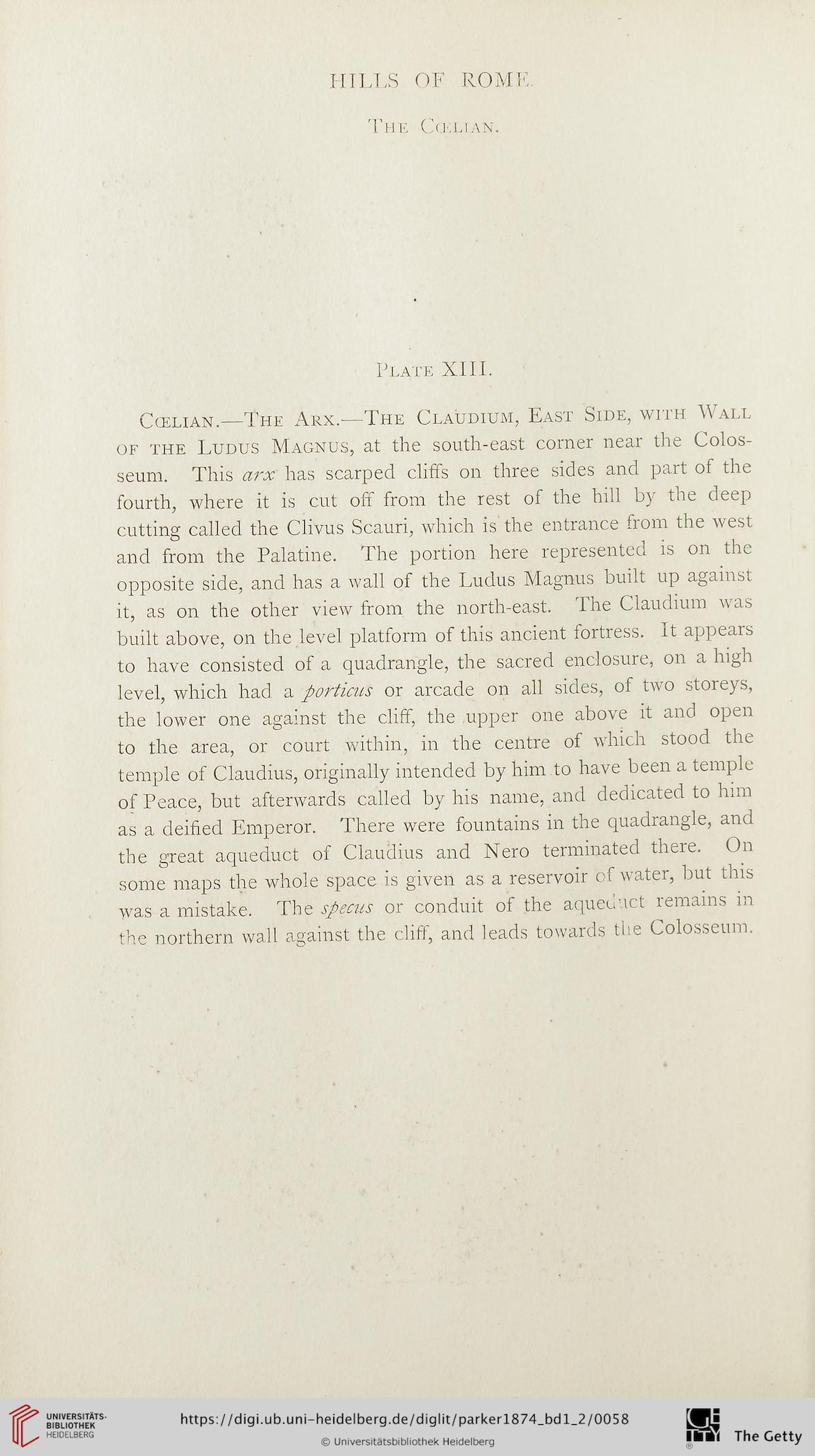HILLS OF ROME
'The Ca'ilN.
Plate XIII.
Coelian.—The Arx.—The Claudium, East Side, with Wall
of the Ludus Magnus, at the south-east comer near the Colos-
seum. This arx has scarped cliffs on three sides and part of the
fourth, where it is cut off from the rest of the hill by the deep
cutting called the Clivus Scauri, which is the entrance from the west
and from the Palatine. The portion here represented is on the
opposite side, and has a wall of the Ludus Magnus built up against
it, as on the other view from the north-east. The Claudium was
built above, on the level platform of this ancient fortress. It appears
to have consisted of a quadrangle, the sacred enclosure, on a high
level, which had a portions or arcade on all sides, of two storeys,
the lower one against the cliff, the upper one above it and open
to the area, or court within, in the centre of which stood the
temple of Claudius, originally intended by him to have been a temple
of Peace, but afterwards called by his name, and dedicated to him
as a deified Emperor. There were fountains in the quadrangle, and
the great aqueduct of Claudius and Nero terminated there. On
some maps the whole space is given as a reservoir of water, but this
was a mistake. The specns or conduit of the aqueduct remains in
the northern wall against the cliff, and leads towards the Colosseum.
'The Ca'ilN.
Plate XIII.
Coelian.—The Arx.—The Claudium, East Side, with Wall
of the Ludus Magnus, at the south-east comer near the Colos-
seum. This arx has scarped cliffs on three sides and part of the
fourth, where it is cut off from the rest of the hill by the deep
cutting called the Clivus Scauri, which is the entrance from the west
and from the Palatine. The portion here represented is on the
opposite side, and has a wall of the Ludus Magnus built up against
it, as on the other view from the north-east. The Claudium was
built above, on the level platform of this ancient fortress. It appears
to have consisted of a quadrangle, the sacred enclosure, on a high
level, which had a portions or arcade on all sides, of two storeys,
the lower one against the cliff, the upper one above it and open
to the area, or court within, in the centre of which stood the
temple of Claudius, originally intended by him to have been a temple
of Peace, but afterwards called by his name, and dedicated to him
as a deified Emperor. There were fountains in the quadrangle, and
the great aqueduct of Claudius and Nero terminated there. On
some maps the whole space is given as a reservoir of water, but this
was a mistake. The specns or conduit of the aqueduct remains in
the northern wall against the cliff, and leads towards the Colosseum.




